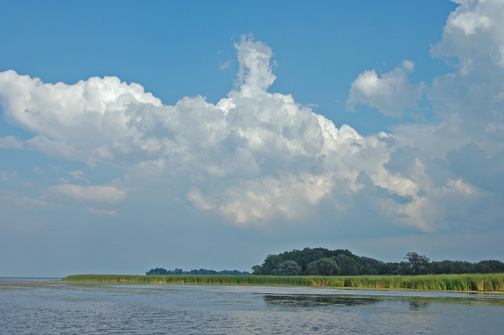EPA study finds high levels of toxins in Great Lakes fish

All the information in the EPA study – from Cyanobacteria counts to fish tissue data – is limited to the US side of the Great Lakes. (Map from the EPA's 2015 report / pg. 116)
In 2015, the US Environmental Protection Agency (EPA) published the results from a 2010 national assessment of US coastal waters. The study’s findings were shocking: less than 1% of the sites sampled were rated good when contaminate concentrations in fish tissue were used as a measure of ecosystem health.
The EPA’s study also examined biological quality (which looks at benthic invertebrates like clams and worms), water quality and sediment quality. Samples were taken from all over the country, from the warm waters of Biscayne Bay to the cool waters of Lake Superior (the Great Lakes are treated as coastal waters). The data collected on these other measurements is also concerning. According to the study only 36% of coastal waters were rated as having ‘good’ water quality. When it came to sediment and biological quality just over 55% of coastal waters were rated as ‘good.’
The EPA data from the Great Lakes region provides further insight. Of the fish tissue collected, less than 1% contained contaminant concentrations low enough to avoid creating a risk of ‘adverse consequences’ when consumed by wildlife.
The findings about fish tissue toxicity inevitably prompt concerns about fish consumption and human health. The EPA study was aimed at assessing harm to wildlife rather than humans*, but the EPA conducted a Human Health Study to supplement the Great Lakes data. Commonly consumed fish were collected from 157 locations along the US shoreline of the Great Lakes, and fillets were analyzed for toxins. All of the fillets sampled contained detectable levels of mercury, PCBs (polychlorinated biphenyls), PBDEs (brominated flame retardants) and PFCs (perfluorinated compounds). According to the report, over 80% of the sampled fish exceeded the Great Lakes Sport Fish Advisory non-cancer threshold for PCBs, while over 50% exceeded the threshold for mercury.
The EPA’s study raise grave concerns about the health of the Great Lakes ecosystems. It also underlies the importance of keeping contaminants out of the lakes. The data from the study has the potential to be a powerful tool. It could be used to help determine fish consumption guidelines, enforcements efforts, effluent limits and clean up measures. However, the data only covers the US side of the Great Lakes, information is not available for Ontario. This is a problem. If Ontario wants to take the health of the Great Lakes seriously, we need to gather similar information and then use it to guide our policies and laws.
*The EPA data was based on ‘whole-body’ fish samples (i.e. the entire fish was ground up and analyzed for toxins) whereas testing for fish consumption guidelines is normally based on fillet analysis.

